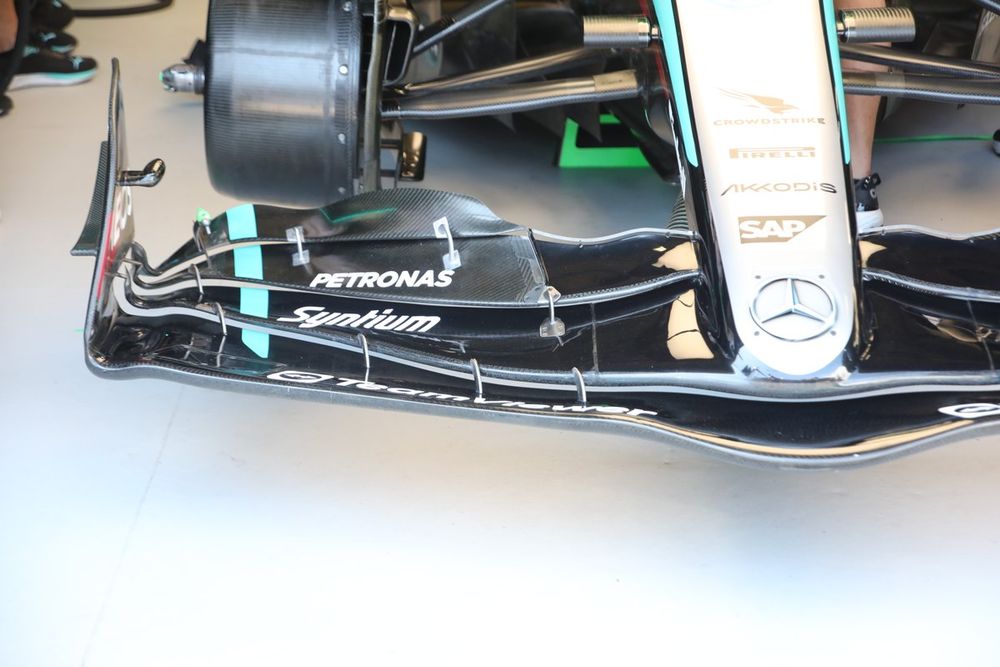The German manufacturer raised eyebrows at the start of the season when the front wing of its new W15 replaced its upper flap with a thin-strip of carbon fibre.
With this strip hiding the rearward element of the wing element below, it ensured that the car fully complied with Article 3.9.1e of F1’s technical regulations that demands: “With the exception of the rearmost closed section, the rearmost point of every closed section must not be visible when viewed from above.”
As can be seen below in the version that Lewis Hamilton continued to run in Monaco, the idea with the front wing was that it would help reduce drag and better manage airflow at the front of the car to help improve downforce-creating properties for the critical floor area.
But as the team has come to understand the weaknesses of its car – which has proved especially tricky to deliver peak performance in both high and low speed corners – it has come to the conclusion that it needs to pursue a different design direction for its car.
An important element of this is a new front wing that it hopes can help better balance the car through the various speed ranges, as well as deliver more outwash. George Russell has run with this new design in Monaco.
The wing had originally been pencilled in for the Spanish Grand Prix, before being brought forward to Canada – and then an extra effort managed to get one example of it ready for Monaco.
What is different with the wing
The new specification has changes right across the wing’s span that also requires alterations to be made to the nose assembly.
The most obvious exclusion on the new specification wing is the extremely short chord inboard element that had raised many eyebrows when it emerged at the start of the season. This was the area where the team installed the infamous legality strip to ensure that its design fully complied with the regulations.
Instead, the chord of the uppermost element has been reinstated to a more conventional length but both it and the flap below are now narrower, as the flap pivot has been moved closer to the nose.
As a consequence, the moveable sections of those flaps are now wider, providing more scope when it comes to set up. Because of these alterations, the spanwise flap distribution of all four elements has been amended, with this having the most effect in the outboard section, especially at the endplate juncture.
Here the chord of the mainplane has been shortened and…
Click Here to Read the Full Original Article at Autosport.com – Formula 1 – Stories…

